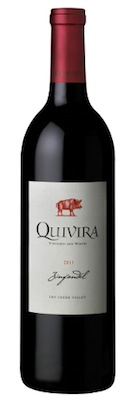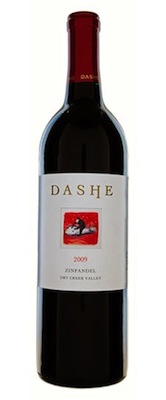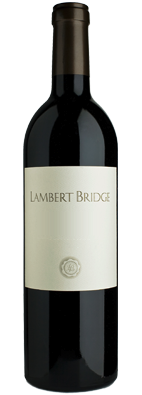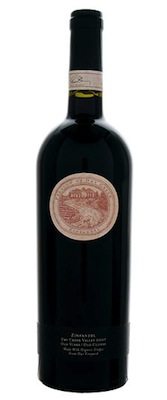The Beer Drinker’s Guide to Wine: Seven Go-To Zinfandels
Photo via Dry Creek Winery Drink Lists wineI suspect that many people who shy away from wine can probably trace the impulse back to an inciting trauma that had something to do with the ‘80s, a wedding, and Beringer White Zinfandel. This strawberry-soda-hued sugarbomb, being relatively low in alcohol and sweet enough to be mistaken for fruit punch, became a Wine For People Who Don’t Drink Wine, and probably holds the record for Most Ill-Advised Hookups and Worst Mornings After of any wine in California history, due to its raging trendiness at large-scale public events back in the Miami Vice days and its utter inability to control itself.
Zinfandel is a black-skinned grape with a high tolerance for hot, dry climates (In Puglia, Italy, it is known as Primitivo) and has been grown in California since French and Italian immigrants brought it with them during the Gold Rush and recognized a familiar terrior in Sonoma county’s inland valleys. It is a grape with a big personality and generally makes jammy, full-bodied wines whose signature flavor profile is heavy on cane berries and sometimes black cherry, with pepper and anise or other exotic spices wafting across the finish. Its blush version has been made since the 19th century and was originally a by-product of the “saignée” method, in which some juice is siphoned off a red Zinfandel mash to increase its concentration.
What you might not know if you were a victim of White Zinfandel Psychosis Syndrome (WZPS – I’m pretty sure it’s in the Diagnostic Statistical Manuals, look it up) is that when not treated in a cavalier manner and served by the gallon to unsuspecting youths ogling bridesmaids in seafoam taffeta gowns, Zinfandel is awesome. This long-lived, often head-trained, gnarly character survived immigration to the States, Prohibition, phylloxera, and the mass capture of vineyard acreage deemed more suitable for orchard crops like pears and plums. Today it is getting its due as the signature grape of one of California’s most interesting wine-growing areas, Dry Creek Valley.
Dry Creek extends northwest of Healdsburg, Calif., in Sonoma County. A diverse and eccentric AVA, Dry Creek is picnic paradise, with miles of small, family-owned vineyards on dazzling properties. Some don’t grow Zinfandel at all, but a majority do, and you can confidently buy a Zin from Dry Creek that will be a crowd-pleaser and an excellent companion at summer barbeques.
If you’re looking for restrained minerality and a stiff upper lip, know that Zinfandel’s unlikely to be your guy. Zin is the red wine drinker’s go to for casual summer parties and the official pour for Guys Tending The Grill. Zinfandel is bold, strong, spicy, and playful, a very versatile food wine. Though it does have a special affinity for grilled meats, it makes friends easily, and will socialize with all things tomato, mushroom, smoky, spicy and chocolate-based.
Following are Seven “Non Deadly” Zins, for which you need never go to confession. Any of these should be useful for getting you past any Post White Zin Stress Disorder symptoms you might still be experiencing from that wedding in ’87.
Quivira
Winemaker Hugh Chapelle combines grapes from several estate vineyards in the area to craft this biodynamic winery’s signature Zin. One of the classics, and arguably the exemplar Dry Creek Zinfandel, Quivira Zin is a dense but nuanced wine full of blackberry, raspberry and cherry notes, peppery spiciness and velvety tannins. This wine might be the quintessential sipping beverage for backyard charcoal-watching. It also plays nicely with heavier pasta dishes (think Bolognese) and, oh, say, pork sausage. And at $22 it also plays nicely with your budget.
Dashe
John Louveau bought a piece of property in Dry Creek in 1989 and discovered an abandoned vineyard of 70-year-old “gnarly head” vines that had been buried under blackberry brambles and weeds. Luckily grapes are tenacious monsters and these vines didn’t need much coaxing to come back into their full glory. Dry farming makes the grapes lower-yield and very intense in flavor. Zins can be deep and heavy or light and bright, and good examples of both styles can be found in Dry Creek. What I like about the Dashe old vines is the way you can taste… well, the struggle against the elements. These vines have worked hard and have a flinty minerality and a slightly dusty character while retaining the classic fruit profile of a mature Zin (Blackberry, blackberry, blackberry). $30.00
Dry Creek Vineyard 
These guys are on a mission to produce varietal wines with very clear expressions of varietal character, and while Zinfandel is only one of their interest areas, they do boast a pretty definitive one. Their Old Vine Zinfandel is earthy but bright, and loaded with peppercorn, rose petal, exotic spices, blackberry and dark cherry. Very rich and nicely balanced, this stuff is in good company with anything smoky, grilled, chocolate…or all by itself. $20-$30.
Lambert Bridge 
Though they also make Cabernet Sauvignon, Petite Syrah and Chardonnay, among others, Lambert Bridge has three separate Zin bottlings, two vineyard-specific and one blended. The 2011 mixed-bag Zinfandel is rich and dark and spicy, with a hint of chocolate as well as the Zinfandel’s signature bramble fruit and cherry. At $48, it isn’t an everyday happy hour selection for most of us, but it is extraordinarily versatile and food friendly, and unlike some Zinfandels it doesn’t scream its head off to be paired with meat (though if you are a duck confit person, this is your main squeeze). Happy to collaborate with tomatoes, winter squash, apples, cheese and chocolate, this wine is also just fine standing on its own.
Peterson
Small scale, sustainability forward, and devotedly iconoclastic, Peterson Winery produces soulful, beautiful wines that display not only classic Dry Creek terroir but an attention to detail you can taste. Their Zins (they have three) all share a subtle, bright personality with firm acidity and varying degrees of blackberry, cherry and spices. All of them are a steal at around $25 a bottle.
Preston
This wine-o-phile’s personal favorite reason to make the pilgrimage up to Dry Creek, Preston Winery is a prelapsarian paradise of a vineyard with on-site potagers, fruit trees, and an olive grove where you can often watch a flock of sheep “self-seasoning” as they nibble the foliage. Farm cats, cider presses, antique greenhouses, shady nooks custom made for making out—uh, I mean, sipping—and barn swallows galore. All of which would be awesome even if their wines were just okay. Their wines are a lot more than Just Okay. Zinfandel isn’t even their major set-piece (they mostly specialize in the “Rhone Rangers:” syrah, petite syrah, carignane, roussane, viognier,) but since the entire portfolio is so splendid and since it is my favorite winery in the area, I’m making sure it hits the list. Their Dry Creek Zin is a fabulous exemplar of the area’s heritage grape, showcasing a flavor profile of berries, black tea, spices and a tiny hint of tobacco. Small additions of Mourvedre and Petite Syrah make this Zinfandel more cellar-friendly than it might be on its own, and it will last a long time—or would, if you could keep your corkscrew to yourself. And good luck with that. $36.00
Zichichi
This small-batch family winery makes some ass-kicking Zinfandel. It is not easy to get your hands on it, as it tends to sell out, but it’s on the list because it sells out for a reason. If you’re in the area, this ranks with Preston and Quivira as a wonderful place to spend a little time—especially, in their case, for barrel tastings. They actually sell “futures” based on those tastings and it’s pretty damned cool. Their Old Vine Zin is a jam-fest, garnet-colored with the hot-zone elements of blackberry, raspberry and pepper in full flower on the palate. This wine is juicy, ripe tasting, and ages well. $32-$50… if you can find it.